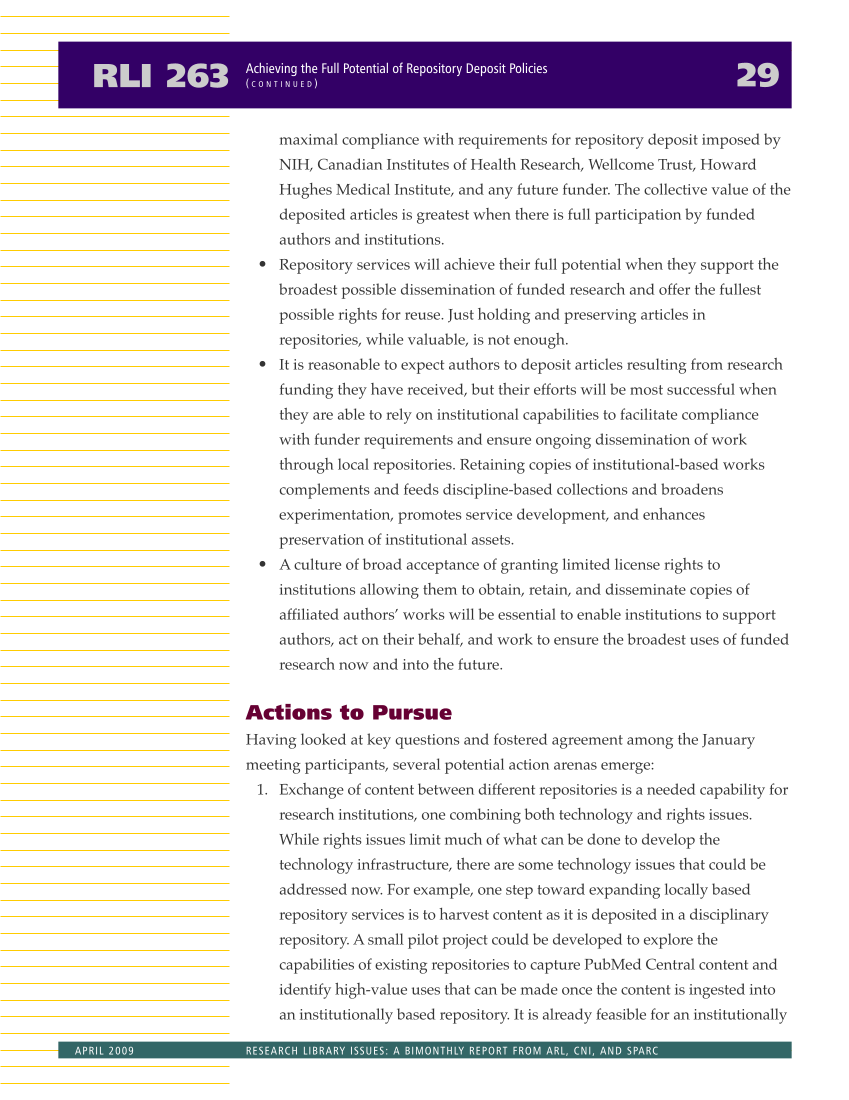maximal compliance with requirements for repository deposit imposed by NIH, Canadian Institutes of Health Research, Wellcome Trust, Howard Hughes Medical Institute, and any future funder. The collective value of the deposited articles is greatest when there is full participation by funded authors and institutions. • Repository services will achieve their full potential when they support the broadest possible dissemination of funded research and offer the fullest possible rights for reuse. Just holding and preserving articles in repositories, while valuable, is not enough. • It is reasonable to expect authors to deposit articles resulting from research funding they have received, but their efforts will be most successful when they are able to rely on institutional capabilities to facilitate compliance with funder requirements and ensure ongoing dissemination of work through local repositories. Retaining copies of institutional-based works complements and feeds discipline-based collections and broadens experimentation, promotes service development, and enhances preservation of institutional assets. • A culture of broad acceptance of granting limited license rights to institutions allowing them to obtain, retain, and disseminate copies of affiliated authors’ works will be essential to enable institutions to support authors, act on their behalf, and work to ensure the broadest uses of funded research now and into the future. Actions to Pursue Having looked at key questions and fostered agreement among the January meeting participants, several potential action arenas emerge: 1. Exchange of content between different repositories is a needed capability for research institutions, one combining both technology and rights issues. While rights issues limit much of what can be done to develop the technology infrastructure, there are some technology issues that could be addressed now. For example, one step toward expanding locally based repository services is to harvest content as it is deposited in a disciplinary repository. A small pilot project could be developed to explore the capabilities of existing repositories to capture PubMed Central content and identify high-value uses that can be made once the content is ingested into an institutionally based repository. It is already feasible for an institutionally RLI 263 29 Achieving the Full Potential of Repository Deposit Policies ( C O N T I N U E D ) APRIL 2009 RESEARCH LIBRARY ISSUES: A BIMONTHLY REPORT FROM ARL, CNI, AND SPARC











































